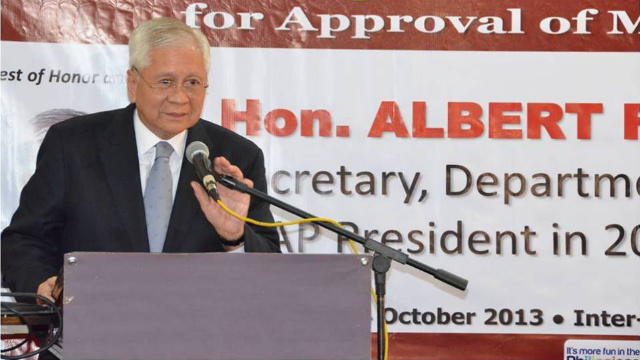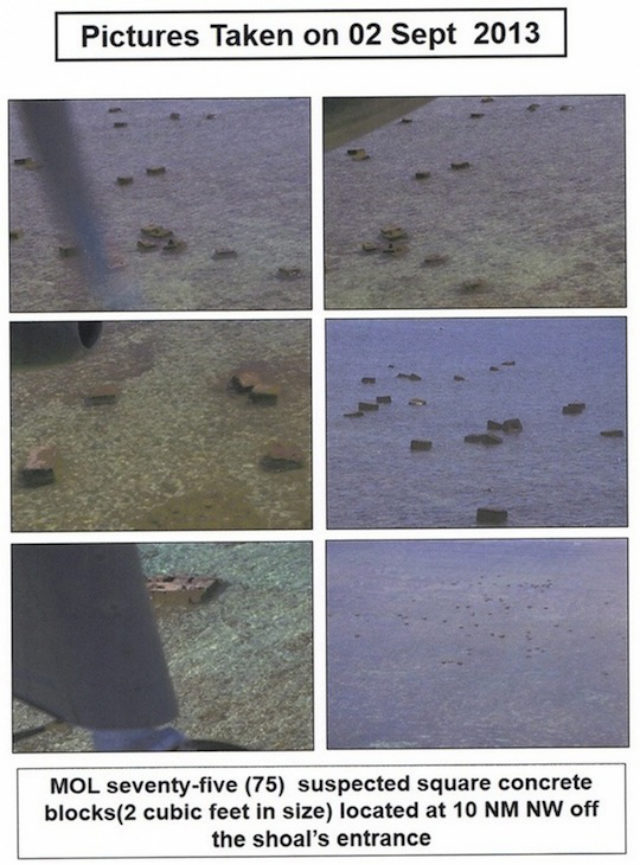SUMMARY
This is AI generated summarization, which may have errors. For context, always refer to the full article.

MANILA, Philippines – From wielding a “substantive piece of information” over a month ago, the Department of Foreign Affairs (DFA) ended up having no “determination of the facts.”
Foreign Secretary Albert del Rosario on Thursday, October 24, admitted the Philippines is not ready to file a diplomatic protest over concrete blocks allegedly installed by China in the disputed Panatag (Scarborough) Shoal.
“We don’t have a determination of the facts,” Del Rosario told reporters when asked if the Philippines is still filing a diplomatic protest against China.
The secretary departed from a previous statement. In an interview on September 5, Del Rosario said the Philippines would file a diplomatic protest “in the next few days.” (READ: DFA: Chinese construction to bolster PH case.)
“I think that’s a substantive piece of information that we can tack on to our arbitration case. We can have it work positively for us,” Del Rosario said back then. (Watch the file video below.)
On Thursday, Del Rosario’s admission came after the President said he is not convinced that China placed the blocks in disputed area in the West Philippine Sea (South China Sea).
President Benigno Aquino III contradicted his defense officials, who repeatedly claimed that China placed at least 75 concrete blocks in Panatag. (READ: Aquino on Panatag blocks: No proof vs China.)
In an interview with reporters in Brunei on October 9, Aquino said a closer inspection showed barnacles and moss covering the concrete blocks. He said this means the blocks weren’t dropped or “placed there recently.”
“We don’t accuse until we have proof,” Aquino said, after a journalist asked him why the Philippines hasn’t filed a formal protest against China over this.
Defense department’s ‘error’
The President on Wednesday, October 23, repeated that the blocks “are very, very old.”
“They are not a new phenomenon. So they don’t seem to give us any reason to have an increase in anxiety,” he said in a forum with foreign correspondents.
The President’s words clashed with those of the Department of National Defense (DND) in the middle of a historic case that Manila filed against Beijing.

The DND’s claim, from the first day, was expected to trigger diplomatic consequences – as it did, when China hit the Philippines. “What the Philippines said is untrue,” Chinese Foreign Ministry spokesman Hong Lei said. (READ: China denies ‘concrete facilities’ in Panatag.)
Did the DND request clearance from the DFA, the government’s diplomatic arm, when it exposed the supposed Chinese blocks? Del Rosario declined to respond categorically.
The secretary, however, noted that the DND and DFA remained “co-equals” in the Cabinet.
When a reporter asked for a reaction on “what seemed to be an error on the part of the defense department,” Del Rosario replied: “I think you have two opposing views.”
“The Philippines’ view is that there are concrete blocks there. We don’t know how it got there, when it got there, who put it there. The Chinese view is that there are no concrete blocks; there are only rocks,” Del Rosario said. “So there you are.” – Rappler.com
Add a comment
How does this make you feel?
There are no comments yet. Add your comment to start the conversation.